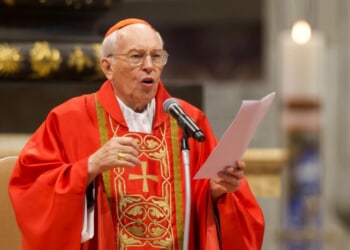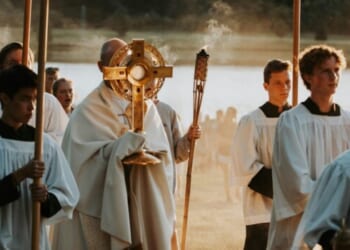Britain will recruit 400 Nepalese Gurkhas for a new artillery regiment, addressing troop shortages and expanding Nepalese soldiers’ roles in UK defense.
The late and noted American historian Bryan Farwell famously described the British Army’s Gurkha regiments as being “quite simply, the finest infantrymen in the world.” He noted how the Nepalese soldiers went from fierce foes of the British Empire to their most loyal recruits.
The Gurkhas served alongside the British in the Indian Mutiny, in the trenches on the Western Front, in the desert of Mesopotamia in World War I, and every theater of operations in World War II.
The Gurkhas were present with the British Army in the Falklands and throughout the Global War on Terror (GWoT).
Now, the Nepalese soldiers, arguably the world’s most famous “mercenaries” or “private military contractors,” will help solve a very modern problem for London: filling the ranks of the British Army, which has struggled to meet its recruiting goals.
The British Ministry of Defense (MoD) announced that more than 400 additional Gurkha personnel will be recruited over the next four years to create “The King’s Gurkha Artillery” (KGA), which will operate within the Royal Regiment of Artillery.
The effort is part of the new Labour government’s “Plan for Change,” which seeks to bolster UK security by increasing defense spending to 2.5 percent of the country’s GDP. The MoD explained that the famed Nepalese soldiers will “take up artillery roles for the first time.”
According to The Times newspaper, the recruiting effort will also help address the “700-soldier shortfall within the Royal Regiment of Artillery [while] also help bolster the army, which has suffered from a retention and recruitment crisis.”
The British Army has around 71,300 soldiers, the fewest since the Napoleonic Wars, more than 210 years ago.
Moreover, approximately only 55,000 are even considered fully deployable, “meaning that they can serve without medical restrictions.” The new target for the British Army is to have a fighting force of 73,000 personnel. The UK has eased recruiting restrictions recently, including allowing cancer survivors to serve.
Where Will These Gurkhas Come From?
Approximately 4,000 Gurkhas serve with the British Army, all recruited in their native Nepal, where thousands compete “annually for a limited number of places.”
Around one-third of the KGA will be recruits, while the remainder will transfer from existing units. The first recruits are reportedly on track to complete their initial training by this November.
After which, the force of 400 troopers will then head to Larkhill Garrison, Wiltshire, the home base for the Royal Artillery (RA), where the personnel will receive their “trade training,” including on the various artillery systems now used by the British Army.
“The KGA will become integral to the UK Armed Forces’ artillery capabilities. As part of the new offer for Gurkha soldiers, and in recognition of the demands of modern warfare, personnel who join the KGA will be trained on advanced equipment, including the Archer and Light Gun artillery systems. In the future, they will also train on the remote-controlled Howitzer 155 artillery system,” the MoD added.
The KGA will also be the first British Army unit in fourteen years to receive a new cap badge, and it will denote the expanded role that the Gurkhas will play within the British Army.
“The Brigade of Gurkhas has rightly earned a reputation as being amongst the finest soldiers in the world, and the formation of The King’s Gurkha Artillery recognises the outstanding contribution that they have made, through their years of dedicated service,” said Minister for Veterans and People Alistair Carns.
“Our government is already delivering for defence through our Plan for Change, and this latest development will support retention efforts amongst Gurkhas while protecting and defending UK interests at home and abroad.”
The KGA troopers are expected to still carry their famed kukri, Nepal’s national weapon, which is an angled knife.
About the Author: Peter Suciu
Peter Suciu has contributed over 3,200 published pieces to more than four dozen magazines and websites over a thirty-year career in journalism. He regularly writes about military hardware, firearms history, cybersecurity, politics, and international affairs. Peter is also a Contributing Writer for Forbes and Clearance Jobs. He is based in Michigan. You can follow him on Twitter: @PeterSuciu. You can email the author: [email protected].
Image Credit: Shutterstock/ Peter Rhys Williams.
















